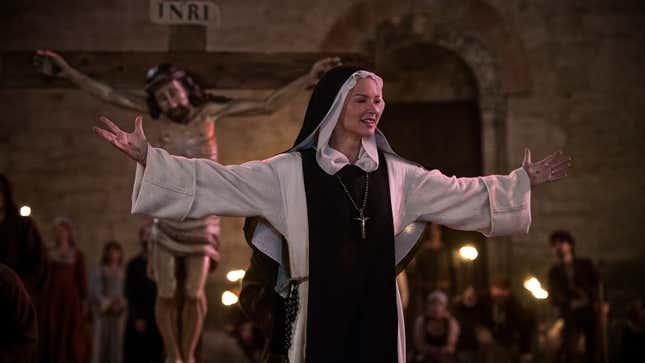‘Lesbian Nun Movie’ Benedetta Is An Intoxicating Cocktail of Truth and Lies
You don't have to be one of the faithful to fall under the spell of Paul Verhoeven's latest
EntertainmentMovies

The tale of Renaissance-era Italian nun Benedetta Carlini has mysteries pouring out of it like blood from stigmata, but its narrative appeal is not among them: Carlini’s clout-chasing, scamming, and queerness imbue her story with a surprising modernism. Look under her habit and you’ll see that despite the four centuries that separate her and us, we’re not so different, after all. It was only a matter of time before someone brought her story to the screen.
That someone turned out to be Paul Verhoeven, the director/provocateur whose flirtation with the absurd has more than a few times led to a full-on make-out session with camp (this is the man responsible for Basic Instinct and Showgirls). In case you missed his name on the opening titles of his indefatigably entertaining Benedetta, Verhoeven reminds you of his presence when, en route to the convent that will become Benedetta’s home, the child’s family is accosted by robbers, and a bird shits on one of their faces as a sort of divine intervention. In the following scene, as Benedetta’s family arrives in Pescia, we see a street performance of a man lighting his farts on fire. This is not five minutes into the movie. From the start, the impish Verhoeven makes it clear that he’s the directorial equivalent of fabric softener on what in other hands might be a starchy period piece.
-

-

-

-

-

-

-

-

-

-

-

-

-

-

-

-

-

-

-

-

-

-

-

-

-

-

-

-

-

-

-

-

-

-

-

-

-

-

-

-








































